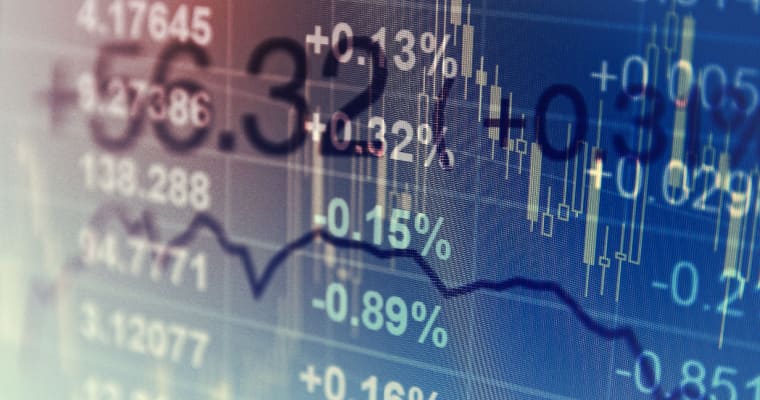High-Frequency Trading: Overview, Types and Advantages

High-Frequency Trading or HFT is an algorithm-based trading strategy that entails high-speed trade execution, high order-to-trade ratios, and high turnover rates, leveraging high-frequency data and e-trading tools. The complex algorithms and computer programs are capable of transacting a very high number of orders within a very short span of time.
Read on to get a complete overview of high-frequency trading, strategies, its impact, advantages and risks.
What is High-Frequency Trading?
Large institutional investors like hedge funds, sovereign wealth funds, and investment banks indulge in high-frequency trading. High-tech computer programs analyse corresponding stocks and show an emerging trend in milliseconds. In case these algorithms find a trigger, high-frequency traders place their orders rapidly across various exchanges within a few seconds.
This strategy is primarily used to buy or sell a stock within a few milliseconds. Traders indulging in HFT do not think about profits like normal investors; instead, they seek arbitrage opportunities. However, the arbitrage window is open for a very short time. Therefore, you need to act fast, or the opportunity may disappear.
How Does High-Frequency Trading Work?
For high-frequency trading, it is imperative to use powerful computers, the latest technological tools and a high-speed internet connection for smooth trading. One can make money through this trading strategy by taking advantage of distortions in demand and supply in stocks and indices, which develops an arbitrage opportunity.
High-frequency traders are mainly concerned about possibilities and their impact. The growth assets of a company or its fundamentals do not mean much in high-frequency trading. This system started gaining prominence since exchanges started offering different kinds of incentives to companies for inducing market liquidity. Incentives in the form of fees and rebates on different costs are provided to companies.
Let’s see an example of how this trading system functions:
Suppose the stock of a company is trading on the Bombay Stock Exchange at Rs. 250 at 11:00:04.08 AM. At the same time, the stock of the same company is trading on the National Stock Exchange at Rs. 280. A high-powered computer will pick up these trends and rapidly buy stock listed on BSE and simultaneously sell them at NSE.
The window of opportunity is so small that only modern, sophisticated software can pull off these trades for you.
Also Read
What are the Different Types of HFT Strategies?
Here are some of the high-frequency trading strategies that one can follow:
• Index Arbitrage
It is a type of trading strategy that aims to garner profits by taking advantage of a price difference between two or more indices. This can be a trading strategy that looks out for price discrepancies between two indices trading on different exchanges.
One can also use this trading strategy to look for arbitrage opportunities between components of an index and instruments that track an index, like ETFs.
• Volatility Arbitrage
This trading strategy aims to generate profits by exploiting the difference between the future price volatility of a security and the inherent volatility of options related to the said security. One must have the right knowledge about whether the implied volatility of options is underpriced or overpriced.
• Passive market making
Under this strategy, an underwriter opts for a bid in secondary markets. The underwriter will purchase shares in a public offering, and they are allowed to quote higher bids than competitive investors.
• Global Macro
It is a mutual fund strategy that entails investing in assets rapidly after considering the macroeconomic situation of the country in which it is present. The sudden changes in the general economic or political situation of a country play an important role, and managers will pool their money in assets only if the economic and political mood is optimistic. Assets may include equities, futures and options, commodities, etc.
What is the Market Impact of High-Frequency Trading?
HFT is a hotly contested topic among financial market participants. Some criticise it by saying that it gives an undue advantage to large institutional investors and compromises the playing field. This strategy also affects buying or selling in bulk.
Additionally, these sophisticated technologies and tools tend to play a destabilising role in financial markets. For example, many large-scale market crashes since the 2000s have been attributed to these trading strategies as they liquidate the portfolio in a split second.
Algorithms and computer programs associated with HFTs can cause a spike in the price of assets due to large-scale buy orders and their immediate cancellation. Therefore, it is an immoral and unethical way of manipulating prices to favour some large investors at the expense of small retail investors.
What are the Risks of High-Frequency Trading?
Some risks of HFT that traders should be aware of are as follows:
- High-frequency traders hold their position for a very short time span and, in doing so, acquire minimal capital before liquidating their holdings. As a result of this, the risk-reward ratio is extremely high. Consequently, they may earn substantial profits, which may be quite huge in absolute numbers, or incur heavy losses.
- Ghost liquidity is a term associated with these trading strategies. There is no real liquidity generated by HFT, as traders hold assets for a very short time frame. These securities change hands multiple times before getting held off by regular investors, and by that time, the liquidity goes away.
- Intensive speculation, spoofing and layering play a negative role and threaten the stability of overall financial markets. Various market crashes since the advent of these trading techniques have been attributed to them.
What are the Advantages of High-Frequency Trading?
Here are some advantages of these trading techniques:
- Traders can earn profits by taking advantage of even a small change in global stock exchanges. They can earn huge profits on bid-ask spreads.
- HFT provides traders with sufficient arbitrage and trading opportunities by identifying very small changes in the prices of stocks across multiple markets.
- Liquidity in stock exchanges receives a boost due to high-frequency trading. Intense competition among investors also leads to a jump in the number of trades. More liquidity means financial markets will function more efficiently.
High-Frequency Trading vs Long-Term Investments
Here are some differences between the two trading strategies:
| Parameter | HFT | Long-term investment |
| Meaning | A high-frequency trading ends with zero position. Traders deploy capital to execute trade on small margins and earn small profits. | Long term investors deploy large-scale capital to earn high profits by price appreciation over the long term. |
| Capital | The capital requirements of these trading strategies are relatively smaller. | Long term investment requires huge initial capital. |
| Costs | As the time horizon of HFT is small, it comes with low transaction costs. | The investment timeline is long; therefore, running costs tend to be higher in case of long-term investments. |
| Profits consistency | In high-frequency trading, powerful computers give signals for executing a trade; hence, there is consistency in profits. | Due to manual interference and a long timeline, it is not possible to garner profits every time you indulge in long-term investments. |
Also Read
What are Some Facts About High-Frequency Trading?
Some facts about this type of trading have been discussed below:
1. Latency
An underpriced latency occupies a major role in HFT than speed. Latency means the time required for data to reach its destination. Therefore, underpriced latency is more significant than low latency.
2. Decision-making
Traders must consider all aspects of high-frequency trading before picking up a trade. There is an internal decision time that makes sure that the corresponding trade does not expire worthlessly.
3. Speed
Internal speed plays an important role in earning profits from high-frequency trading. There must be a very short time between orders coming into the markets and the execution of these orders. Many trading institutions reduce their internal time to a fraction of a second so that any external transmission delay becomes insignificant.
4. Signal
The accuracy of signals is of utmost importance as potential gains may change into potential losses in case traders do not receive signals properly. High-frequency trading ensures the accuracy of such signals before triggering trades at high speeds.
Final Word
High-frequency trading is a complex and expensive trading phenomenon that uses various modern tools and software. The window of opportunity for trading is quite small, and HFT effectively executes rapid buying and selling of shares across multiple markets in a very short time. Traders dealing with HFT should consider all aspects of this unique trading system before going ahead with their investment.
FAQs on High-Frequency Trading
Ans: Large-scale hedge funds, independent proprietary units and brokerages deal with HFT. They use statistical arbitrage and earn profits by taking advantage of price differentials between various asset classes.
Ans: Usually, high-frequency trading strategies tend to be profitable. However, profits depend on how quickly you can execute these trades and the reliability of signals from electronic tools.
Ans: The first step to establishing a high-frequency trading company is that you must register your firm with the respective authorities. After that, you have to set up an infrastructure for carrying out trading using various hardware and software. Moreover, you must have access to various financial markets either via a broker or direct membership.
Ans: In India, the Securities and Exchange Board of India (SEBI) is the authority that regulates high-frequency trading. All companies indulging in this arbitrage trading strategy must comply with all the rules that have been laid out by SEBI.
Ans: The primary difference between algo trading and high-frequency trading is that the former strategy is used to capitalise on placing a large number of orders across multiple markets rapidly for the long term. On the other hand, HFT allows arbitrageurs to buy and sell stocks at a rapid pace.
Want to put your savings into action and kick-start your investment journey 💸 But don’t have time to do research? Invest now with Navi Nifty 50 Index Fund, sit back, and earn from the top 50 companies. Disclaimer: Mutual Fund investments are subject to market risks, read all scheme-related documents carefully. This article has been prepared on the basis of internal data, publicly available information and other sources believed to be reliable. The information contained in this article is for general purposes only and not a complete disclosure of every material fact. It should not be construed as investment advice to any party. The article does not warrant the completeness or accuracy of the information and disclaims all liabilities, losses and damages arising out of the use of this information. Readers shall be fully liable/responsible for any decision taken on the basis of this article.

Customer’s Feedback
No comments found.10 Best Demat Accounts in India for Beginners in 2023
Creation of Demat accounts revolutionised the way trades were conducted at the stock exchanges. It... Read More »10 Best SIP Plans for 1000 Per Month in India 2023
Systematic Investment Plan (SIP) is an investment style or route with which you can invest a fixed ... Read More »How to Invest in Mutual Funds in India – Easy Steps
Mutual funds can be an excellent way to diversify your portfolio and gain exposure to a wide range ... Read More »20 Best Nifty 50 Index Funds in India to Invest in April 2023
What is the Nifty 50 Index Fund? Nifty 50 index funds are a type of passively-managed equi... Read More »Asset Management Company (AMC) – Types and Benefits
What is an Asset Management Company (AMC)? Asset Management Company or AMC is a financial ... Read More »10 Best Gold Mutual Funds to Invest in India (April 2023)
Gold Mutual Funds are funds that invest in gold and gold-related assets such as bullion, coin... Read More »20 Best Flexi Cap Mutual Funds to Invest in India 2023
Flexi-cap funds are mutual fund schemes that aim to invest in stocks of companies across market cap... Read More »Best SIP Plans for 15 years – Top 10 SIP Plans to Invest in India 2023
A systematic investment plan (SIP) could be a convenient mode or style of investing in mutual funds... Read More »10 Best SIP Plans for 1 year Investment in India 2023
There has been a massive surge in SIP or Systematic Investment Plan investors in recent years. As p... Read More »10 Best SIP Plan for 3 Years in India to Invest in 2023
SIP or Systematic Investment Plan helps bring investment discipline in an investor’s life. It’s... Read More »10 Best SIP Plan for 10 years India in 2023 – Returns and Performance
Ask any beginner mutual fund investor and most of them would tell you that their preferred mode of ... Read More »10 Best SIP Plans for 5 years in India to Invest in 2023
Systematic Investment Plan (SIP) could be an effective investment mode if you want to invest a fixe... Read More »Top 10 Chit Fund Schemes in India in 2023
Chit funds are one of the most popular return-generating saving schemes in India. It is a financial... Read More »10 Best Gold ETFs in India to Invest in April 2023
Gold ETFs or Gold Exchange Traded Funds are passively managed funds that track the price of physica... Read More »10 Best Demat Accounts in India for Beginners in 2023
Creation of Demat accounts revolutionised the way trades were conducted at the stock exchanges. It... Read More »20 Best Index Funds to Invest in India in April 2023
What is an Index Fund? An index fund is a type of mutual fund or exchange-traded fund (ETF) that... Read More »Best Arbitrage Mutual Funds to Invest in India in April 2023
Arbitrage funds are hybrid mutual fund schemes that aim to make low-risk profits by buying and sell... Read More »10 Best SIP Plans in India to Invest in April 2023
What is SIP? SIP or Systematic Investment Plan is a method of investing a fixed amount in ... Read More »10 Best Corporate Bond Funds in India to Invest in April 2023
Corporate bond funds are debt funds that invest at least 80% of the investment corpus in companies ... Read More »10 Best Bank for Savings Account in India [Highest Interest Rate 2023]
Savings account is a type of financial instrument offered by several banks. It lets you safely depo... Read More »

































